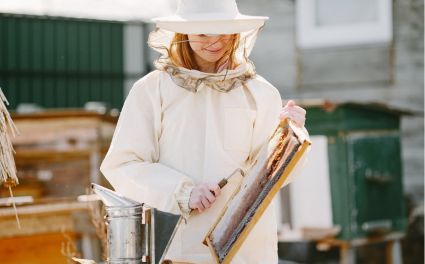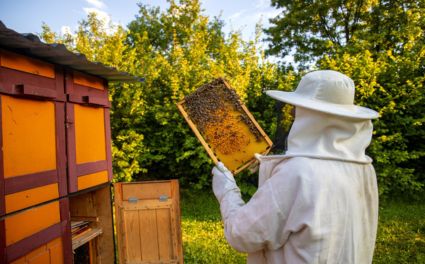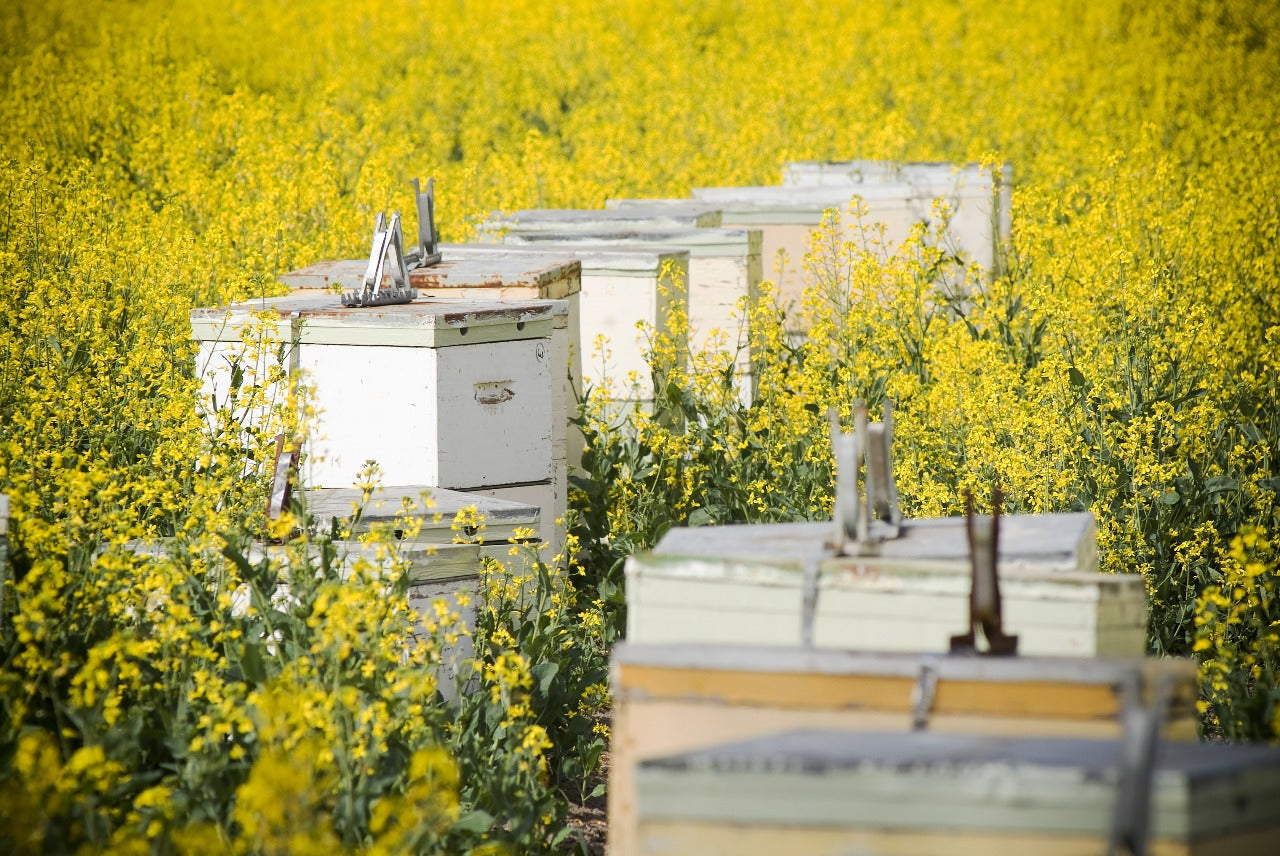Stings from wasps can be extremely painful and even dangerous. For beekeepers and outdoor workers, protection isn’t just about comfort — it’s about safety. Bee suits act as a shield between humans and stinging insects, forming reliable armor that minimizes the risk of injury.
This article explores how beekeeping suits work, their essential components, and how they perform when facing wasps. We’ll also cover the limitations of these suits, how to strengthen your wasp defense, and why investing in high-quality protective gear from OZ Armour ensures both safety and comfort.
Beneath the Bee Suit: Essential Components for Protection
Bee suits are more than just clothing — they are precision-designed safety systems. A typical Beekeeping Suits provides full-body coverage, ensuring that no part of your skin is exposed to stings.
Let’s look at the main parts that make up this protective armor:
-
Veil and Hat: The veil is the most critical component, protecting your face and neck while ensuring ventilation and clear visibility. You can find durable, breathable options among Beekeeping Veils designed to fit comfortably with jackets or suits.
-
Jacket or Coveralls: High-quality Beekeeping Jackets provide strong upper-body protection and are ideal for quick inspections. Their ventilated layers help regulate temperature during long working hours.
-
Gloves and Boots: Hands and feet are the most vulnerable parts while handling hives. Reliable Beekeeping Gloves and reinforced boots form a complete seal, ensuring no wasp or bee can slip through.
-
Trousers and Ankle Protection: Lower-body safety is often overlooked, yet wasps and bees can crawl upward. Beekeeping Trousers and Beekeeping Ankle Protection ensure secure closure at the ankles, preventing stings in hard-to-cover areas.
Together, these elements create reliable armor — an essential toolkit for every beekeeper or anyone working near insect colonies. For young learners, Beekeeping Kids Suits offer safety and comfort, allowing children to explore the lives of bees with confidence.

Shielding from Stings: Bee Suits in Action
The key to bee-suit effectiveness lies in its materials and design. Most high-grade beekeeping suits are built with multi-layer fabric — a breathable mesh that’s thick enough to prevent stingers from reaching the skin.
When worn correctly, the suit forms a sealed barrier. Elastic wrist and ankle cuffs, zip-tight veils, and overlapping flaps prevent entry points for bees and wasps. Proper ventilation helps beekeepers stay cool during hive inspections.
These features make bee suits effective not just for honey bees, but also for defense against wasps. While bees usually sting once and die, wasps can sting multiple times, making their threat greater. A strong, layered bee suit minimizes this risk by keeping distance between the insect’s stinger and your skin.
OZ Armour’s range of protective clothing — from ventilated jackets to full-body suits — represents the balance between protection and comfort that modern beekeeping demands.
Wasp Encounter: Understanding Bee Suit Limitations
Even the most advanced bee suit has its limits. When dealing with wasps, understanding their behaviour is just as crucial as your gear.
Wasps are more aggressive than bees and can sting repeatedly. They often target movement and are drawn to vibrations or dark colours. Unlike honey bees, they don’t leave their stingers behind. That means even with a high-quality bee suit, some vulnerable points — like suit zippers, cuffs, or loose veils — may still pose minor risk.
Beekeepers should always check for gaps before approaching a wasp nest. Inspect the areas around the wrists, neck, and ankles, and tighten every seal. Wearing beekeeping ankle protection and gloves improves coverage.
It’s also wise to understand the difference between a beehive and a wasp nest. Bee hives are wax-based and inhabited by cooperative pollinators, while wasp nests are paper-like structures made of chewed wood pulp. Knowing whether you’re facing a bee nest or wasp colony determines your approach — observation for bees, avoidance for wasps.
In all cases, remain calm, avoid sudden motions, and never swat at wasps. The key is awareness, composure, and equipment.
Beyond Bee Suits: Strengthening Wasp Defense
While bee suits are an excellent first line of defense, additional precautions enhance safety when facing wasps.
-
Recognize Nest Locations: Be alert for papery, round structures near roofs or underground. Spotting a nest early can prevent stings and costly infestations.
-
Use Specialized Gear: For extremely aggressive colonies, layering or adding Beekeeping Equipments such as wasp-proof veils or heavy-duty gloves provides extra protection.
-
Avoid Provocation: Move slowly and steadily. Loud noises, rapid movements, or vibrations can trigger attacks.
-
Work During Cooler Hours: Wasps are less active at night or early morning.
-
Stay Calm: If a wasp lands on you, remain still until it flies away. Panic only attracts more.
For those learning the craft, OZ Armour’s Learn Beekeeping resources guide beginners in safe handling, seasonal care, and identifying threats like wasps versus bees.
Beyond the Hive: Knowledge that Protects
True beekeepers know that education is as important as equipment. Reading and staying updated with expert insights helps prevent accidents and promotes sustainability in beekeeping.
Recommended reads from OZ Armour include:
-
Do Bee Suits Protect from Wasps? – a comprehensive exploration of sting protection.
-
Removing a Bee Sting – step-by-step sting treatment for quick relief.
-
Bumblebee vs Honeybee – discover how each species contributes to nature.
-
Bumblebee vs Carpenter Bee – learn to identify wood-boring versus pollinating species.
-
Bee Nest vs Wasp Nest – detailed comparison for beginners.
-
Lives of Bees – fascinating insights into how long bees live and thrive.
-
Read More Blogs About Beekeeping – continuous learning for new and professional beekeepers alike.
For those who value both performance and personality, Pink Bee Suits offer style without compromising on safety — ideal for anyone who wants protection with flair.
Maintenance and Best Practices
Even the strongest bee suit needs care. After each use, inspect for wear, loose seams, or small tears. Wash with mild soap to remove pheromones and avoid attracting aggressive bees or wasps. Store your gear in a cool, dry place away from sunlight.
Regular checks of zippers, elastic cuffs, and veils ensure maximum longevity. The durability of OZ Armour apparel reduces replacement costs and maintains reliable defense year after year.
Properly maintained suits continue to protect against stings while preserving ventilation and comfort — vital for long hours of hive work.

Conclusion: Empowered Protection in the Buzzing World
In the delicate dance between humans, honey bees, and wasps, protection is everything. Bee suits serve as the frontline defense — their layered construction, secure seals, and breathable mesh design offering unmatched safety.
Yet, even as they protect, awareness remains your greatest tool. Understanding insect behaviour, differentiating a beehive or wasp nest, and practicing calm control define a beekeeper’s skill.
Beekeeping combines discipline, patience, and protection. With trusted apparel such as beekeeping jackets, trousers, gloves, veils, and ankle protection, beekeepers can approach every colony with confidence.
As a leading innovator in beekeeping equipment, OZ Armour continues to refine protective designs that combine comfort, breathability, and safety. Their gear empowers both beginners and professionals to work fearlessly, whether managing a peaceful bee nest or facing defensive wasps.
To explore more expert insights and safety guides, visit OZ Armour and begin your journey to smarter, safer, and more confident beekeeping today.













